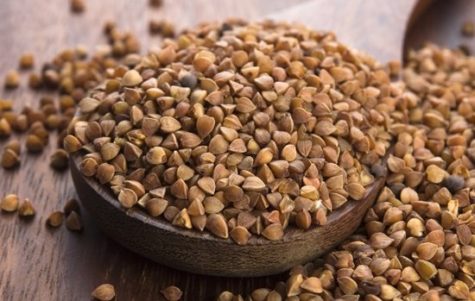The Health Benefits of Buckwheat
Buckwheat has an impressive catalog of nutritional properties:
- Non-GMO (It requires hardly any chemicals to grow well because it naturally grows so quickly).
- High quality proteins (it contains all 9 amino acids)
- Good energy booster (rich in iron and antioxidants
- Naturally contains vitamins and minerals (including zinc, copper and niacin)
- Great for digestion
Because of it being an insoluble fibrous food, buckwheat is essential for cleaning and strengthening intestines. Insoluble fiber also reduces the secretion of bile acids and lowers triglycerides (blood fats). This is particularly good for those suffering with IBS-D, or anybody who has stomach trouble immediately after consuming foods.
Full of healthy fats:
Anybody looking to remain satiated will know that eating plenty of healthy fats is the way forward. Rather than stocking up on high-calorie, low-energy foods such as bread and processed foods, foods high in healthy fats keep you fuller for longer and see that your nutrition quota is also met. Healthy fats are especially great for IBS sufferers as we need to eat small meals, regularly – the healthy fats mean sugar and fat cravings don’t come about to instigate any flare-ups.
Impressive fiber levels:
Although it depends which type of digestive ailment you suffer from, most people will be thankful for a little added fiber to their diet. High fiber foods bulk up the digested food particles, meaning they are easier to pass and less of a trial for your digestive tract. With 4.54 grams of fiber in just 1 cup, you can see that buckwheat is incredibly high in fiber.
Low glycemic index:
The great thing about buckwheat is that it has a low GI of 54, which means it lowers blood sugars and digests the glucose more slowly than similar products like rice or wheat. Studies have further found that whole buckwheat groats contributed to significantly lowered blood glucose and insulin responses than when the participants ate refined wheat flour products. Whole buckwheat also scored highest on their ability to satisfy hunger.
What can you do with buckwheat?
You can buy raw buckwheat from just about any supermarket or food store in the wholefoods section. I recommend playing with it and seeing what interesting, healthy recipes you can make with it. You can use buckwheat flour as a gluten free alternative when making pancakes and other breads. Soba or buckwheat noodles are a great substitute for pasta, particularly if you are on a gluten free diet.
A Few Quick Serving Ideas
- Combine buckwheat flour with whole wheat flour to make delicious breads, muffins and pancakes.
- Cook up a pot of buckwheat for a change of pace from hot oatmeal as a delicious hearty breakfast cereal.
- Add cooked buckwheat to soups or stews to give them a hardier flavor and deeper texture.
- Add chopped chicken, garden peas, pumpkin seeds and scallions to cooked and cooled buckwheat for a delightful lunch or dinner salad.
Source: My Wellbeing Journal




Leave a Reply